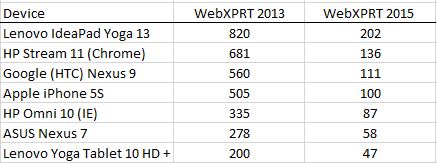As we discussed recently, we’re working on the design document for the next version of MobileXPRT, and we’re really interested in any ideas you may have. However, we haven’t talked much about what makes for a good benchmark test.
The things we measure need to be quantifiable. A reviewer can talk about the realism of game play, or the innovative look of a game, and those are valid observations. However, it is difficult to convert those kinds of subjective impressions to numbers.
The things we measure must also be repeatable. For example, the response time for an online service may depend on the time of day, number of people using the service at the time, network load, and other factors that change over time. You can measure the responsiveness of such services, but doing so requires repeating the test enough times under enough different circumstances to get a representative sample.
The possible things we can measure go beyond the speed of the device to include things such as battery life and compatibility with standards, and even fidelity or quality such as with photos or video. BatteryXPRT and CrXPRT test battery life, while the HTML5 tests in WebXPRT are among those that test compatibility. We are currently looking into quality metrics for possible future tools.
I hope this has given you some ideas. If so, let us know!
Eric













